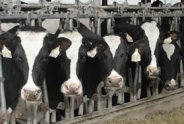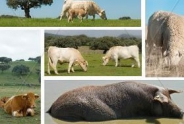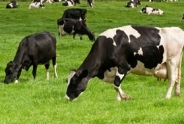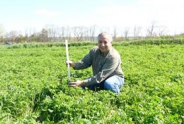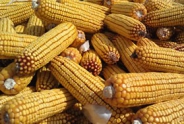Field Crop Weed Identification and Control Series 2022
Event Details
Date
February 2, 2022
February 16, 2022
February 23, 2022
March 2, 2022
March 9, 2022
March 16, 2022
Time
12-1:00 pm
Location
Virtual
Host
South Central New York Dairy & Field CropsJanice Degni
607-391-2672
email Janice Degni
February 2, 2022, Broadleaf Weed identification for crop production 12-1 pm (virtual) Bryan Brown NYSIPM.
Many of our most problematic weeds are broadleaf weeds. The best way to control them varies depending on the species, so it is imperative that weeds are identified correctly. In this session we'll go over some of the key distinguishing characteristics of the most problematic broadleaf weeds in NY field crops. For each species, we'll discuss some of the biology that makes it weedy and look for potential "Achilles heals" that can be exploited for management. We'll also review best practices for using smartphone weed ID apps.
NYSDEC credits: 1.0 CCA Credits: 1.0 PM
Registration Link
https://cornell.zoom.us/webina...https://cornell.zoom.us/webinar/register/WN_vAVpWQLZQOmRD4ESAdxwEg
February 16, 2022, Grass Weed identification for crop production 12-1pm (virtual) Caroline Marschner, Ext. Assoc. Weed Ecology, Cornell
Identifying grass and grass-like weeds can be challenging but, is necessary for good weed management. During this program we will discuss what traits to look for when identifying grasses, go over some of the common crop grass weeds, and share some resources for grass weed management.
NYSDEC credits: 1.0 CCA Credits: 1.0 PM
Registration Link
https://cornell.zoom.us/webinar/register/WN_skC9zzukQfqkzGvuuJ-6fw
February 23, 2022, Weed management in corn 12-1pm (virtual) Jeff Miller, Resource Educator, CCE Oneida County.
Weed control is an integral part of corn production. Cultural and chemical control methods should be incorporated in an integrated approach to control weeds. Cultural practices like crop rotation, tillage, and cover crops will be discussed. Herbicide families (site of action) efficacy, timing of application will be discussed for annual grasses and broadleaf weeds, perennial grasses, perennial broad leaf weeds and herbicide resistant weeds.
NYSDEC credits: 1.0 CCA credits 1.0 PM
Registration Link
https://cornell.zoom.us/webinar/register/WN_tJA7KjPDQ5mNRfnfBLvAsQ
March 2, 2022, Weed management in Soybeans 12-1pm (virtual) Mike Hunter, Regional field crop specialist, CCE North Country Regional Ag Team
Implementing integrated weed management practices in soybean production will be the focus of this presentation. Mike Hunter will share results from three years of on-farm soybean herbicides trials in New York State. He will provide the current status of herbicide resistant weeds in New York, and discuss effective herbicide resistant weed control strategies and how to manage resistant weeds on your farm.
NYSDEC credits: 1.0 CCA credits 1.0 PM
Registration Link
https://cornell.zoom.us/webinar/register/WN_PlVxcqFaQay0XrP1nQiUyQ
March 9, 2022, Weed management in hay and pasture 12-1pm (virtual) Janice Degni, Team Leader and Field crops specialist, CCE SCNY regional team
Weed Control for Hay Crops and Pastures
This session will provide a review of cultural and chemical weed control practices for clear alfalfa or grass, mixed stands, and pasture. It will include practices that give the hay species a competitive edge over weeds and herbicide options for different weed scenarios. Common difficult to control weeds in pasture will be covered as well as improvement of older hay stands with weed invasions.
NYSDEC credits: 1.0 CCA credits 1.0 PM
Registration Link
https://cornell.zoom.us/webinar/register/WN_a-V74i04Qc-1xiS4zenWxA
March 16, 2022, Alternative weed control and weed seed management 12-1pm (virtual) Lynn Sosnoskie, Asst. Prof. of weed ecology and specialty crop systems, Cornell
Weeds are a significant threat to crop production due to 1) competitive interactions that limit yield potential, 2) physical interference that reduces harvest efficiency, and 3) serving as an alternate host for pests and pathogens. The evolution of herbicide resistant weeds (in particular marestail/horseweed/Canada fleabane, Palmer amaranth, waterhemp) further complicates weed control efforts by limiting the utility of commonly applied chemical tools. This talk will focus on the current state of herbicide resistance in NY and the future of chemical weed control. Novel weed management strategies, such as harvest weed seed control (HWSC) and electrical weeding will be discussed and recent research updates provided. Best management practices for suppressing unwanted vegetation, including combine and equipment clean-out to limit seed spread, will also be presented.
NYSDEC credit: 1.0 CCA credit 1.0S
Registration Link
https://cornell.zoom.us/webinar/register/WN_-1ANbfA5Tq2slCum5Dmicg
Upcoming Events
Winter Bale Grazing Pasture Walk
January 10, 2026
Truxton, NY
Join us for the second Bale Grazing Winter Pasture Walk!
Have you heard about or seen bale grazing and wondered if it would work for you?
Do you want to learn the nuances and logistical context for implementing this regenerative practice?
Are you interested in seeing the impacts of bale grazing on land and animals from a practicing farmer?
If you answered Yes to any question, The Northeast Region National Grazing Lands Coalition, the Cornell Cooperative Extension Hillside Farms are teaming up to showcase our Second Bale Grazing Winter Pasture Walk!
Announcements
USDA Contract Freezes and Terminations: Legal Action Steps for Farmers
For Farmers with Signed EQIP and CSP ContractsThis resource is written for farmers and ranchers nationwide who have a signed contract with USDA NRCS under the EQIP or CSP program for environmental improvements but have concerns that their contract is frozen, under review, or terminated, and who are uncertain of their rights to receive reimbursement as well as their ongoing obligations under the signed contract.
Version: 1.0
Issue date: Feb 28, 2025
A downloadable factsheet is available at our BUSINESS tab on the top of our webpage.
Additional Information: www.farmcommons.org
USDA Contract Freezes: Filing an NAD Appeal or Demand Letter
This resource is written for farmers and ranchers nationwide who have a signed contract with USDA NRCS under the EQIP or CSP program for environmental improvements and want more information on the mechanics of filing a National Appeals Division (NAD) appeal. This resource includes sample letters.
USDA NAD Appeal https://www.usda.gov/about-usda/general-information/staff-offices/office-hearings-and-appeals/national-appeals-division/nad-appeals
Farm Participants Needed for Bale Grazing Grant!
Information on the Project:- Approximately 10 acres total needed to bale graze two different bale densities
- "Core" farms will graze two winters, "Demo" farms will graze one winter.
- Payments for both "Core" farms and "Demo" farms
- Baseline soil sampling by bale grazing team
- Forage measurements in early season by bale grazing team
- Late season clipping if residual not trampled down by farm
Cornell Cow Convos - New Podcast
On-going podcast, New episodes released on the last Thursday of the month.Guest speakers, CCE Dairy Specialists.
Housed on Soundcloud Channel is CCE Dairy Educators
- Preventative healthcare for cows
- The trend of beef on dairy
- What to look forward to in the new year for dairy
- Socially grouping or pair-housing calves
2018 Drug Residue Prevention Manual
For more than 30 years, the U.S. dairy industry has focused educational efforts on the judicious use of antibiotics through the annual publication of a Best Practices Manual. The 2018 edition of the National Dairy FARM Program: Farmers Assuring Responsible Management? Milk and Dairy Beef Drug Residue Prevention Manual is the primary educational tool for dairy farm managers throughout the country on the judicious and responsible use of antibiotics, including avoidance of drug residues in milk and meat.The manual is a quick resource to review those antibiotics approved for dairy animals and can also be used as an educational tool and resource for farm managers as they develop on-farm best management practices necessary to avoid milk and meat residues. Visit the Manual and Form Library to download copies of this important tool!
Follow us on Facebook
The team updates our facebook page frequently - follow us to be updated on our events, see some fun videos and get local area updates!facebook.com/SCNYDairyandFieldCropsTeam
NYSERDA Agriculture Energy Audit Program
NYSERDA offers energy audits to help eligible farms and on-farm producers identify ways to save energy and money on utility bills. Reports include recommendations for energy efficiency measures.For more information and the NYSERDA Agriculture Energy Audit Program Application click here

